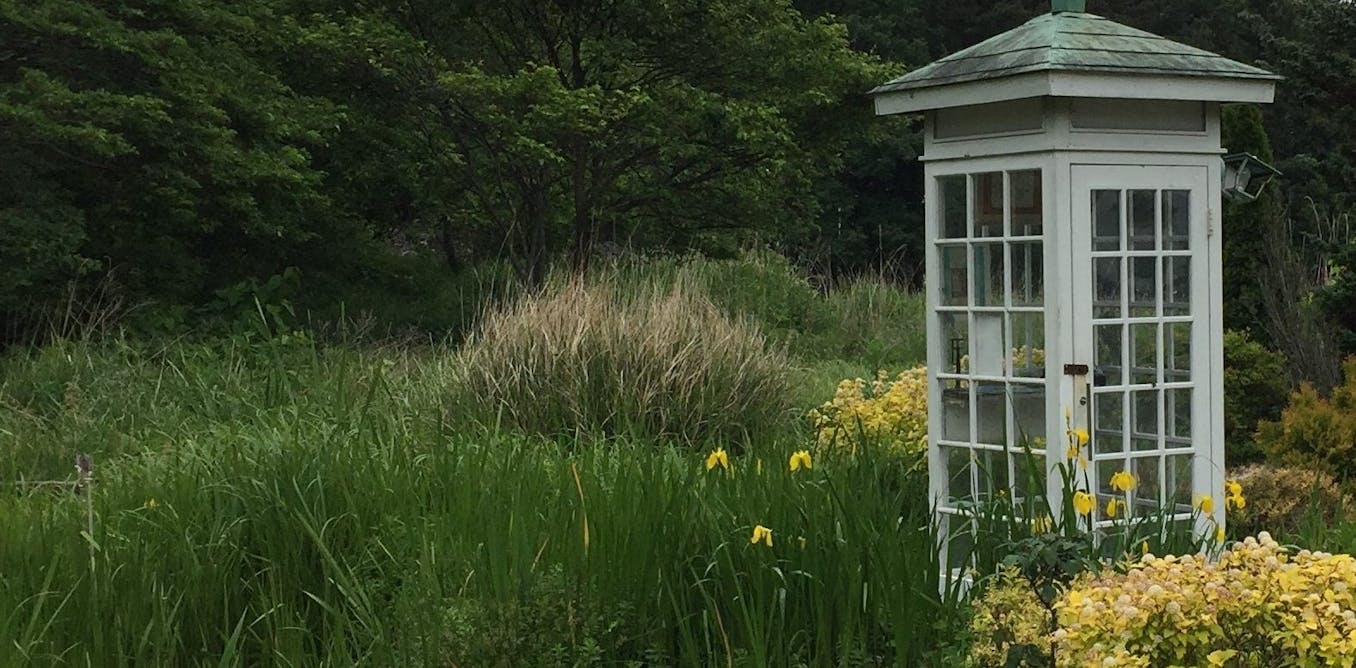Wind phones help the bereaved deal with death, loss and grief − a clinical social worker explains the vital role of the old-fashioned rotary phone

مجلة المذنب نت متابعات عالمية:
My mother died in my home in hospice in 2020, on the day my state of Washington went into COVID-19 lockdown. Her body was taken away, but none of the usual touchstones for grief were available to our family. There was no funeral or supportive gathering, no deliveries of food and no hugs. For months afterward, as the nationwide lockdown continued, thousands of other families like mine saw these death rituals – society’s social supports for grieving – stripped away.
As a clinical social worker and health scholar with 40 years of experience in end-of-life care and bereavement, I knew that I needed some way to tend to my grief for my mother. While in lockdown, I began looking for resources to help me. Then I heard about the wind phone.
What is a wind phone?
At its simplest, a wind phone is a rotary or push-button phone located in a secluded spot in nature, usually within a booth-type structure and often next to a chair or bench. The phone line is disconnected.
People use the wind phone to “call” and have a one-way conversation with deceased loved ones. Here they can say the things left unsaid. Wind phones offer a setting for the person to tell the story of their grief, to reminiscence and to continue to connect to the person who is gone. For many, it is a deeply moving, life-affirming experience.
About 200 wind phones are scattered throughout the United States. Wind phones are open to the public, free of charge and usually found in parks, along walking trails and on church grounds. Typically, they are built by those who want to honor a lost loved one.
The wind phone began in Japan in 2010, when Itaru Sasaki, a garden designer, built a phone booth in his yard so he could “talk” with a deceased relative. Months later, the Fukushima earthquake and tsunami hit; in a matter of minutes, more than 20,000 people died.
Sasaki opened the phone booth to his neighbors, who urgently needed a place to express their grief. Word spread, and soon people came on pilgrimage from around Japan to speak through the “phone of the wind” to those they loved.
Since then, wind phones have spread throughout the world.
Do wind phones work?
Grief is a universal human experience; it affects us psychologically, socially, spiritually and even biologically. Some of our first rituals as humans are those surrounding death, with some practices more than 10,000 years old, such as using flowers in burial ceremonies and positioning the deceased as if asleep, with a pillow under their head.
Yet there is still no clear guidance on how people should deal with grief. But the power of speaking to rather than about the deceased has long been at the root of many grief interventions worldwide, including Gestalt therapy, which encourages patients to role play or reenact life experiences. A common approach taken by a Gestalt therapist is letting the client speak directly to an empty chair while imagining the person they’ve lost is sitting there. A similar approach is to write a letter to the deceased and then read it out loud.
What these techniques and the wind phone have in common is the use of a conversational approach that allows connection, reflection and the safe release of strong emotions. By their very nature, both speaking and writing encourage direct emotional expression; this helps release physical and psychological tension in the body.
What’s more, the spontaneity of saying it out loud can reveal subconscious insights. That’s because talking can outpace internal censorship of painful thoughts.
Using a wind phone can elicit strong feelings, and not all are positive ones. They may elicit tears, anger, guilt and shame. Some conversations become confessional. The wind phone setting provides a way to contain feelings that the bereaved worry might overwhelm them.
Research is needed
In American culture, it’s common to talk about obtaining closure for the loss of a loved one – to get over it and move on. It is true that the initial period of deep sadness and trauma typically fades over time, but some grief can persist across a lifetime. In the weeks, months and years after the death, feelings can erupt unexpectedly in “grief attacks,” or as sudden waves of emotion, triggered by a memory, a smell, an event or a thought.
To my knowledge, no research has been conducted on wind phones, so it’s not yet possible to say from a scientific perspective whether they definitively help a person cope with their grief. This is not surprising; studies on grief have not received as much research attention as mental health disorders, such as depression or anxiety, although grief can lead to either of these disorders.
Yet the rapid spread of wind phones over the past decade suggests, if nothing else, that there is an almost universal need for those in mourning to engage with grief. And for the thousands who have tried it, there is comfort to be found through a one-way call.
نشكركم على قراءة المنشور عبر مجلة المذنب نت, المتخصصة في التداول والعملات الرقمية والمشفرة














